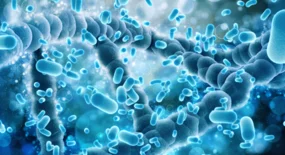Lifestyle changes Influences Breast Cancer and Prostate Cancer Risks

Lifestyle changes Influences Breast Cancer and Prostate Cancer Risks
Breast and prostate cancers are among the most diagnosed cancers worldwide. Almost 19% of all new cancer diagnoses and 10.7% of cancer-related deaths are from either of these two cancers in 2020 alone. Interestingly, the risk of these cancers in immigrants who are originally from low-disease prevalence countries is on the rise indicative of the destination. This confirms the importance of external factors in the etiology of the diseases. Also, a study focusing only on twins revealed that 42% and 27% risk for prostate and breast cancer, respectively, are heritable.Research indicates that if population-wide measures are implemented to reduce tobacco use, increase physical activity, control weight, intake a balanced healthy diet, limit alcohol intake, and conduct routine cancer screening, over half of all cancers in developed countries could be prevented. Widespread lifestyle changes are thus essential to ensure a dramatic reduction in cancer incidence and prevalence.
An individual’s risk of breast and prostate cancer, recovery rate, and the likelihood of disease recurrence can thus be reduced to a considerable extent with modifiable risk factors.
What are modifiable risk factors?
Lifestyle choices and environmental exposures compose the modifiable risk factors. Understanding the mechanisms of action of these modifiable factors can influence patient risk and disease progression; it is thus important to identify how these can be effectively implemented as clinical strategies. These lifestyle factors may be responsible for modulating the impact of certain biological molecules, combating the chronic inflammatory state of tumors and activity of pro-oncogenic genes and signaling pathways through epigenetic mechanisms, and improving the regulation of oxidative stress.
Figure 1 represents the etiology of modifiable risk factors in breast and prostate cancer.
Figure 1: Breast and Prostate Cancer Etiology
How do metabolism and hormones influence cancer?
Lifestyle and hormonal changes impact the body at metabolic and hormonal levels.
- Increased insulin and IGF-1 activity results in the activation of oncogenic signalling pathways, thereby increasing proliferation and disease progression.
- Lipid, protein, and carbohydrate-derived metabolic substrates can provide a constant supply of ATP and metabolic precursors, which are crucial for biochemical processes for tumor progression.
- Gut microbial dysbiosis has been linked with the advancement of breast and prostate cancer using a multi-omic approach. Using metagenomics, it has been demonstrated that prostate cancer progression is accelerated by dysbiosis through the upregulation of lysophosphatidylcholine acyltransferase 1 (LPCAT1).2
- Nutrition has the potential to contribute to tumor growth, hence, dietary interventions like “short-term fasting” have been trailed. The results indicate that appropriately balanced nutrition reduces blood glycemia, hyperinsulinemia, and IGF-1 levels. Physical activity decreases insulin and IGF-1 levels, which in turn helps in reducing their oncogenic effects. In postmenopausal women, adipose tissue is known to be a source of estrogen production. Estrogen has been demonstrated a role in breast cancer initiation, proliferation, and progression. Additionally, estrogen exposure has been strongly correlated to the development of breast cancer, which also includes premenopausal women. A 5% increased risk of hormone receptor-positive breast cancer has been observed each year at a younger menarche age and a 3.5% increase in older women of menopausal age due to the prolonged period of estrogen exposure. Similar findings also suggest that men with obesity are being associated with lower testosterone levels.
How do immune function and inflammation trigger cancer?
Hypertrophy and proliferation of adipose tissue accompanying progressive weight gain result in adipose tissue hypoxia. This triggers hypoxia-inducible factor-1 (HIF1) transcriptional activity. HIF1 transcriptional activity is dependent on its cofactor CDK8, which represses MYC target genes indirectly because of an adaptive response to promote cell survival.
Furthermore, HIF1 upregulates vascular endothelial growth factor (VEGF), which stimulates angiogenesis and metastasis of breast and prostate cancer. Increased HIF1 activity and the predominantly preadipocyte phenotype, in turn, increase leptin levels whilst decreasing adiponectin levels. This hormonal imbalance increases the proinflammatory immune cells and results in increased immune cell infiltration. Proinflammatory immune cells and preadipocytes boost the secretion of inflammatory adipokines, such as the tumor necrosis factor-alpha (TNF-α) and interleukin (IL)-1β, thereby causing chronic inflammatory conditions associated with tumorigenesis
The uptake of nutrients like saturated fatty acids (SFAs) can also trigger inflammation. SFAs induce the activation of toll-like receptors (TLRs), particularly TLR4, activation of the TLR pathway results in an increased transcription factor nuclear factor kappa-light-chain-enhancer of activated B cells (NF-kB), which is responsible for regulating over 100 proinflammatory genes.
Increasing levels of physical exercise and incorporating a healthier diet may in turn decrease adipose-associated inflammation. In addition to this, aerobic-focused activity has the potential and capacity to improve immunity whilst reducing inflammation via the activation of β-adrenergic receptor (β-AR) signaling. Moreover, physical exercise has been related to lipid profile and cytokine levels, increasing high-density lipoprotein levels and IL10 levels, respectively. Modulating these parameters is associated with decreased chronic inflammation.
Oxidative stress and DNA damage
Oxidative stress is a result of inefficient clearance of excess free radicals. It is commonly associated with triggering cancers, owing to the oxidative damage it causes to lipids, proteins, and DNA, leading to genomic instability and mutation.
Overnutrition leads to the uptake of carbohydrates, lipids, and protein triggering the production of ROS. This happens due to the excess supply of energy substrates for mitochondrial metabolism. The continual overnutrition state results in mitochondrial dysfunction, thereby further increasing oxidative stress as well as oxidative stress-induced DNA damage. However, studies have shown that high-intensity physical exercise may improve antioxidant defences in both adults and the elderly by upregulating antioxidant enzymes and allowing the body to effectively process large quantities of ROS.
Apart from food consumption, there has also been a strong link between alcohol consumption and breastprostate cancer risk as it leads to the production of ROS species and acetaldehyde, a by-product of alcohol metabolism. Cancers demonstrate varying levels of ROS metabolism, a deeper understanding and further studies to investigate the use of a ROS index to measure cancer outcomes is the need of the hour.
Figure 2 represents the potential mechanisms of how modifying lifestyle factors can influence cancer phenotype.
Studies have shown that the regulation of gene expression and transcriptional pathways can be modified by physical exercise and dietary interventions. It is also evident that obesity induces a more aggressive form of the disease.
Increased ROS (as in obesity) is known to cause hypermethylation of CpG islands through DNA methyl transferase enzyme, which is characteristic of both breast and prostate cancers. This, in turn, inhibits the transcription of tumor suppressor genes like P21 and BRCA1, and thus aids in the further proliferation of cancer cells.
Thus, in conclusion, while the effects of lifestyle choices start with metabolic changes that influence the epigenome, the ensuing altered epigenome has the potential and capability to influence the tumor microenvironment. Modifying these lifestyle choices can have an array of physiological effects, which in turn, can impact the risk, progression, and overall prognosis of breast and prostate cancer.
References:
- Tan K, Naylor MJ. The influence of modifiable factors on breast and prostate cancer risk and disease progression. Front Physiol. 2022;13:840826.
- Liu Y, Yang C, Zhang Z, Jiang H. Gut microbiota dysbiosis accelerates prostate cancer progression through increased LPCAT1 expression and enhanced DNA repair pathways. Front Oncol. 2021;11:679712.
Disclaimer: The Views/Opinions expressed and/or opinions provided in Videos and other content on MedEnrich Website are those of respective speakers. They do not purport to reflect the opinion or views of Dr.Reddy’s Laboratories Limited or its affiliates (collectively Dr.Reddy’s)in any manner whatsoever and accordingly ,Dr.Reddys does not recommend , endorse or make any representation about the veracity and appropriateness of the views ,opinions/ information on MedEnrich website. Content on MedEnrich website may discuss uses and dosage for therapeutic product that may not have been approved in by the relevant regulatory agencies in your country. Dr.Reddy’s does not support , endorse or encourage any off-label use. Please refer to approved label before prescribing.





